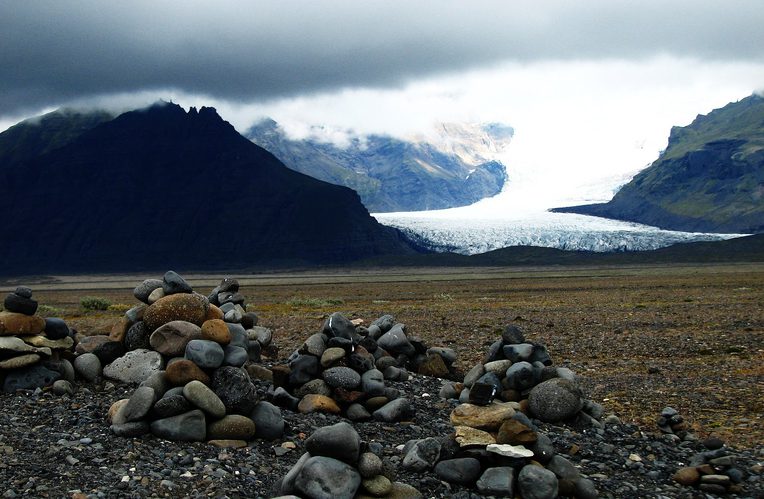Timely
From the Series: Lexicon for an Anthropocene Yet Unseen
From the Series: Lexicon for an Anthropocene Yet Unseen

Some of us remember Watchmen. This was the graphic novel of deconstructed superheroes, nonlinear plot timing, and, perhaps most famously, the bloody smiley face on the front cover and the insidious doomsday clock on the back. Congealed worry dripped closer to the clock face with each consecutive issue as the hands turned toward midnight. Recalling these seemingly halcyon days of the Holocene in the late 1980s has us remember a time when only a few heads of state had their fingers on the annihilation buttons. Now we all do—or so it seems—every time we press the gas pedal.
Anthropology has long been fascinated with temporality, troubled about time-space compressions and the disjointed chronicity of the ethnographic present. Some have called for us to “slow down” (Stengers 2005, 994) our thinking, but it appears as though we are instead amped up and frozen in time all at once. One condition of the Anthropocene, it seems, is that we must learn (again) how to tell time. The timely demands of this era have us thinking in chrono-mashups with divergent scales: geological time married with temporal immediacies, crises, and catastrophes. Whether or not the current ecological era ought to be called the Anthropocene, it is a time that has carved out new trails of thought on the cene. Cenes—as in Pleistocene, Pliocene, Miocene—hail epochs stretching back many millions of years. They have a way of making time’s passage appear truly bottomless. As a category that geologizes our existence, the Anthropocene confers response-ability (Haraway 2007) and punctuates the most massive time scale in our lexicon: the geo-logic. While the Holocene may have been the age in which we learned our letters and our agriculture, the Anthropocene demands schooling in a more reflexive genealogy of circulation and reciprocity among humans and other beings caught up in messy meshes of intraconnectivity (Barad 2007).
In an epoch defined by human effects and bracketed by menacing consequences, one wonders about time on ice. A matter of deep, compacted, illustrative time, glaciers are what the geoscientist Richard Alley (2014) calls a two-mile time machine. Particulate matter like pollen gets stored there, and atmospheric histories get revealed. On the streets of Paris, while the COP 21 climate negotiations roiled inside meeting rooms, massive boulders of glacial ice had been set to melt. Arranged in a circle to mimic a watch, a clock face, a compass, and a point of navigation, the installation “Ice Watch” was meant to draw attention elsewhere. “It is a mistake to think that the work of art is the circle of ice,” explained the artist. “It is the space it invents.” It is also the time it contains: if one were to put her mouth up to the bursting bubbles that crackle across the icy surface, she would breathe in utterly pristine, fifteen-thousand-year-old air.

The great melting at the top of the world, and the bottom as well, has us wondering about the cool, ancient time that is being washed away. It is as though we are living in the Reformation. Earth’s cryosphere is sloughing off as we watch in real time, turned to mush and puddles. One begins to sense a growing nostalgia for the deep history ice holds. It has us thinking cene-icly—backward and forward—as we face a precarious future compounded by generational effects and wicked ethics (Gardiner 2011).
Geological time parallels with other scenics, like changed landscapes. But timely thinking brings us equally to another sensibility of the scene: pulling back the curtains on the human spectacle of the Anthropocene. In fact, if anthropos belongs anywhere in the scene, it must be to acknowledge that he has behaved with histrionic indulgences, like bouts of carbon binging. Next to geological, climatological, and seemingly impossible timescales, we have another kind of scene: tantrums and human melodrama. Tales of Armageddon, apocalypse, and emergency convey the panic that ensues in the mad dash to save human life (Colebrook 2012). The sky is falling, and we get to hear the countdown in terms of parts per million as the air around us continues to carbonize. This scene is like a staged event—waiting in the dark wondering if the knife will show up in the first act, so that we can know how it all will end.
One of the habits that has sustained our dangerous climate games is our propensity to be enraptured with acceleration and enamored with the speediness of things. Responding to the emphatic tempos of the digital age and the rapidly melting poles, a group in Northern California—among them, the musician Brian Eno—has been crafting a ten-thousand-year clock. They call it The Clock of the Long Now and they believe it will work to inspire a sense of long-term responsibility. The machine is meant to embody deep time for humans. Its inventor wants the clock to tick once a year and chime once a century; a melody generator will sound an always unique arrangement atop the two-hundred-foot timepiece nestled in a mountain. The clock’s ten-thousand-year mandate operates as an inverse chronicity, a parabolic rejoinder to the history of human civilizations, the end of the last Ice Age, and the advent of agriculture—the event that some see as the true beginning of the Anthropocene.
We can imagine this decamillenial timeline next to the unhurried temporality of earth beings like mountains (de la Cadena 2015). Yet we also encounter hyperobjects (Morton 2013) along the way, things with vast temporal and spatial reach: objects that endure beyond our use and persist beyond the grave, like Styrofoam or climate change. The Anthropocene, the Betacene (Howe n.d.)—or whatever name this era of eco/human/earth/mineral/creatural morphing finally takes—is calling us to be timely; it draws our attention to the fact that we may be clocking out.
Alley, Richard B. 2014. The Two-Mile Time Machine: Ice Cores, Abrupt Climate Change, and Our Future. Updated edition. Princeton, N.J.: Princeton University Press.
Barad, Karen. 2007. Meeting the Universe Halfway: Quantum Physics and the Entanglement of Matter and Meaning. Durham, N.C.: Duke University Press.
Colebrook, Claire. 2012. “Sexual Indifference.” In Telemorphosis: Theory in the Era of Climate Change, Volume 1, edited by Tom Cohen. London: Open Humanities Press.
de la Cadena, Marisol. 2015. Earth Beings: Ecologies of Practice across Andean Worlds. Durham, N.C.: Duke University Press.
Gardiner, Stephen M. 2011. A Perfect Moral Storm: The Ethical Tragedy of Climate Change. New York: Oxford University Press.
Haraway, Donna J. 2007. When Species Meet. Minneapolis: University of Minnesota.
Howe, Cymene. n.d. “The Betacene.” Unpublished manuscript.
Morton, Timothy. 2013. Hyperobjects: Philosophy and Ecology after the End of the World. Minneapolis: University of Minnesota Press.
Stengers, Isabelle. 2005. “A Cosmopolitical Proposal.” In Making Things Public: Atmospheres of Democracy, edited by Bruno Latour and Peter Weibel, 994–1003. Cambridge, Mass.: MIT Press.